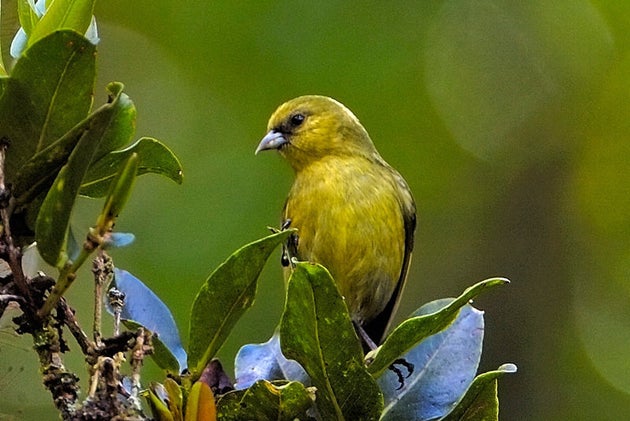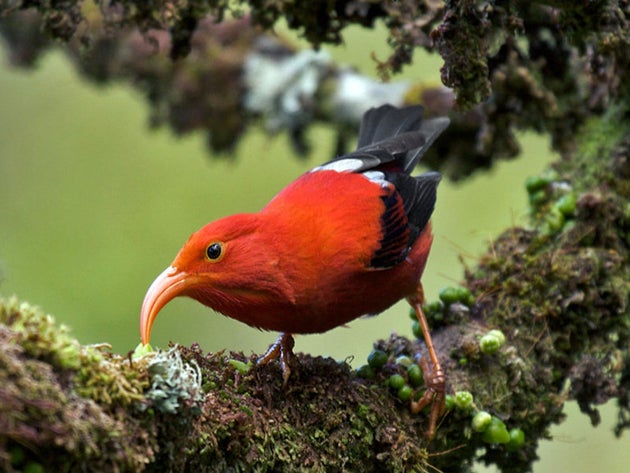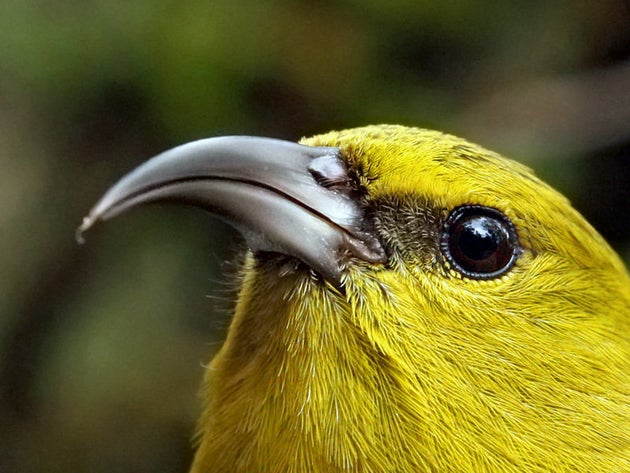Study Predicts Grim Future For Hawaii's Rarest Forest Birds
Millions of years ago, songbirds somehow managed to make their way to Hawaii, eventually evolving into dozens of unique species perfectly adapted to their isolated tropical paradise.
But Hawaii has often been called the "extinction capital of the world," and a new study published Wednesday in the journal PLOS ONE is predicting even more trouble for some of the world's rarest birds.
Researchers at the U.S. Geological Survey found that without immediate and proactive conservation measures, climate change and disease could completely wipe out the 'Akeke'eand 'Akikiki, two species of honeycreepers, and the secretive Puaiohi, or Small Kauai Thrush.
All three are endangered -- each with a population of fewer than 1,000 -- and are found only in a 25-square-kilometer area of the Alakai Swamp on Kauai, the oldest of the main Hawaiian Islands.

This isn't exactly a new problem.
The arrival of Polynesians in A.D. 400, followed by westerners in 1778, caused destruction of native forest habitat and the introduction of alien species, including malaria-carrying mosquitos, feral ungulates and predators like rats and feral cats.
Since the arrival of humans to the islands, 71 of Hawaii's 113 endemic bird species have gone extinct, according to the American Bird Conservancy. Thirty-three of Hawaii's remaining 42 endemic birds are listed as endangered species.
On Kauai, seven of the island's original 13 forest birds have disappeared, including five since the 1960s.
But the U.S. Geological Survey found that if climate change and loss of habitat continues unchecked, 10 of the 20 remaining forest bird species in the state could lose more than 50 percent of their habitat by 2100. Furthermore, six are projected to lose more than 90 percent, while the three Kauai species -- 'Akeke'e, 'Akikiki and Puaiohe -- could lose everything.


| 




